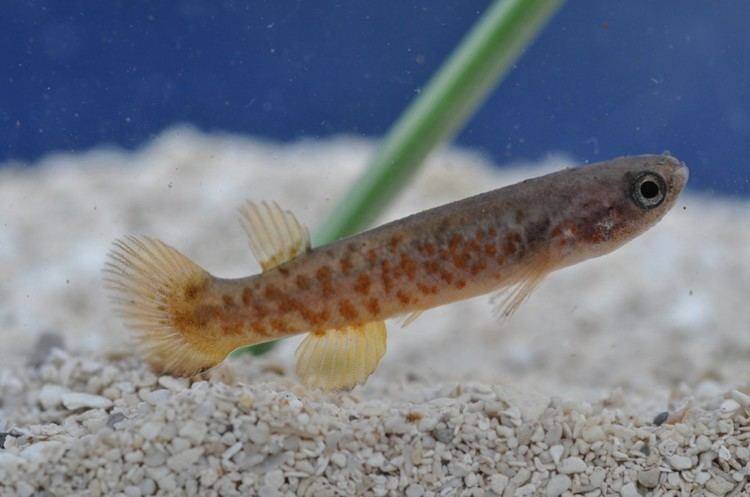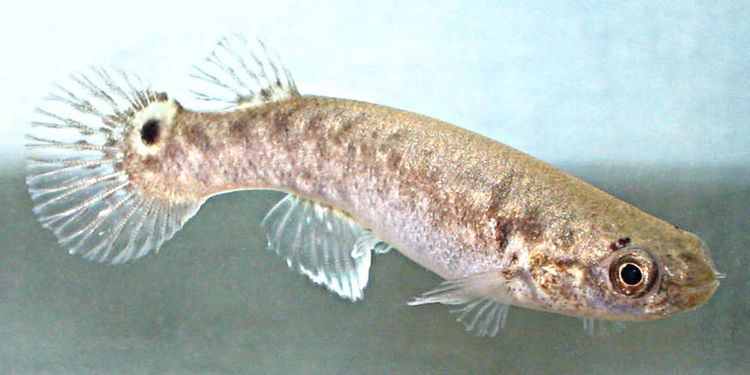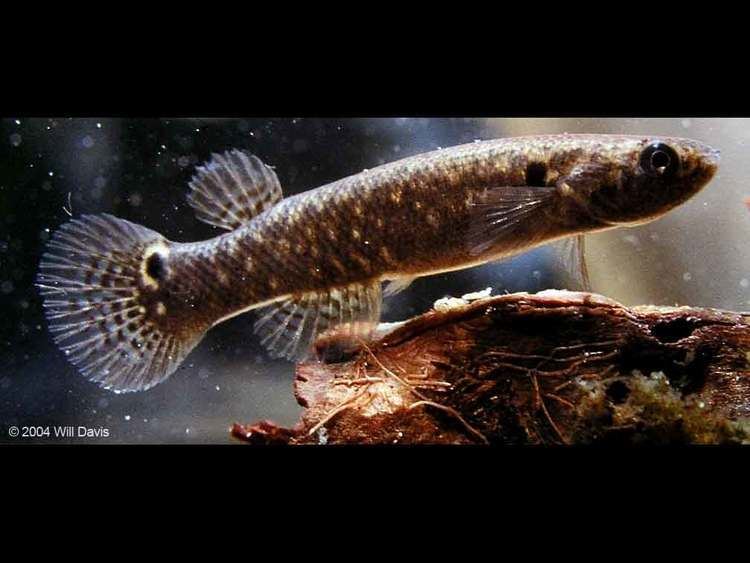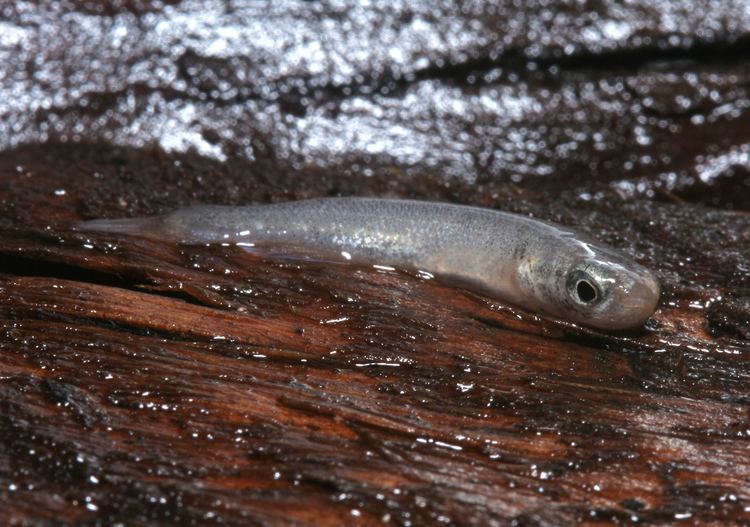Higher classification Rivulus | Phylum Chordata Family Aplocheilidae Scientific name Kryptolebias marmoratus Rank Species | |
 | ||
Similar Kryptolebias, Rivulus, Rivulids, Cyprinodontiformes, Teleost | ||
Mangrove rivulus kryptolebias marmoratus emersion from a crab burrow
The mangrove killifish or mangrove rivulus, Kryptolebias marmoratus (formerly Rivulus marmoratus), is a species of fish in the Aplocheilidae family. It lives along the east coast of North, Central and South America, from Florida to Brazil. It is about 75 mm long.
Contents
- Mangrove rivulus kryptolebias marmoratus emersion from a crab burrow
- Mangrove rivulus found out of the water and jumping on the mud on long caye lighthouse reef belize
- Ecology
- Conservation
- Conservation designation
- Status reviews
- References

The mangrove rivulus is a U.S. National Marine Fisheries Service Species of Concern. Species of Concern are those species about which the U.S. Government’s National Oceanic and Atmospheric Administration, National Marine Fisheries Service, has some concerns regarding status and threats, but for which insufficient information is available to indicate a need to list the species under the U.S. Endangered Species Act (ESA).

Mangrove rivulus found out of the water and jumping on the mud on long caye lighthouse reef belize
Ecology

Scientists have recently discovered that the mangrove rivulus can spend up to 66 consecutive days out of water, which it typically spends inside fallen logs, breathing air through its skin. It enters burrows created by insects inside trees where it relaxes its territorial, aggressive behavior. During this time, it alters its gills so it can retain water and nutrients, while nitrogen waste is excreted through the skin. The change is reversed once it re-enters the water.

When jumping on land, the mangrove rivulus does a "tail flip", flipping its head over its body towards the tail end. The rivulus' jumping technique gives it an ability to direct its jumps on land and to make relatively forceful jumps. A team of scientists associated with the Society for Experimental Biology released a video in 2013 showing the jumping technique.
The species consists mostly of hermaphrodites which are known to reproduce by self-fertilization, but males do exist, and strong genetic evidence indicates occasional outcrossing. They are also the only simultaneous hermaphroditic vertebrates, and the concentration of males to hermaphrodites can vary depending on the local requirement for genetic diversity (for example, if an increase in the local parasite population occurred, secondary male numbers might increase).

K. marmoratus produces eggs and sperm by meiosis and routinely reproduces by self-fertilization. Each individual hermaphrodite normally fertilizes itself when an egg and sperm that it has produced by an internal organ unite inside the fish’s body. In nature, this mode of reproduction can yield highly homozygous lines composed of individuals so genetically uniform as to be, in effect, identical to one another. The capacity for selfing in these fishes has apparently persisted for at least several hundred thousand years. Meioses that lead to self-fertilization can reduce genetic fitness by causing inbreeding depression. However, self-fertilization does provide the benefit of “fertilization assurance” (reproductive assurance) at each generation. Meiosis can also provide the adaptive benefit of efficient recombinational repair of DNA damages during formation of germ cells at each generation. This benefit may have prevented the evolutionary replacement of meiosis and selfing by a simpler type of clonal reproduction such as ameiotic or apomictic parthenogenesis.
Conservation
This species is extremely vulnerable to habitat modification and fragmentation, environmental alteration, and human development/encroachment.
Conservation designation
Status reviews
Taylor (1999) is the last status review for the species.
